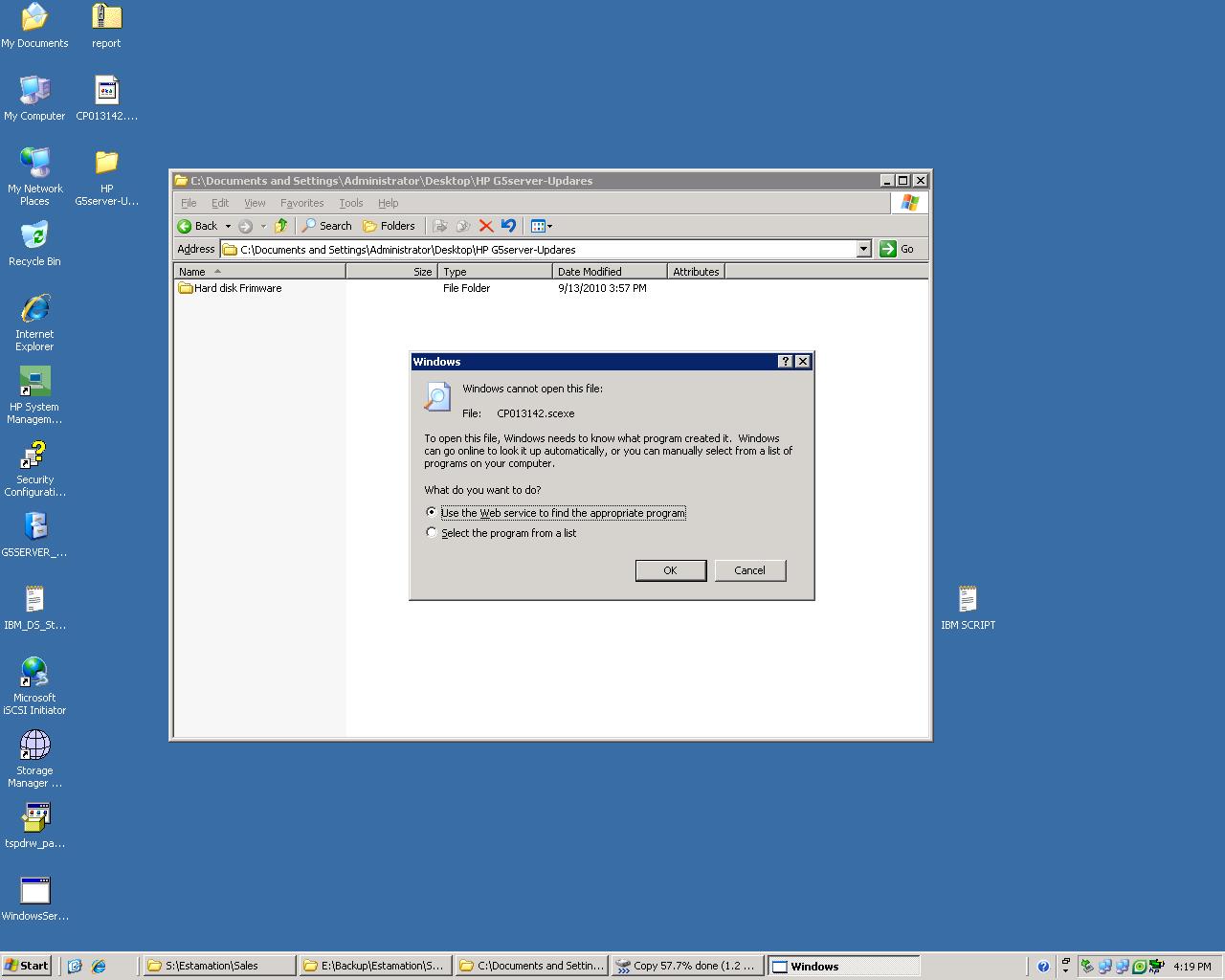Attention, Internet Explorer User Announcement: VMware Communities has discontinued support for Internet Explorer 7 and below. In order to provide the best platform for continued innovation, VMware Communities no longer supports Internet Explorer 7. VMware Communities will not function with this version of Internet Explorer. Please consider upgrading to Internet Explorer 8, 9, or 10, or trying another browser such as Firefox, Safari, or Google Chrome. (Please remember to honor your company's IT policies before installing new software!) • • • •.
You want to run a HP CPxxxxxx.scexe firmware update file on your ESXi Host and it doesn’t work? Mcafee total protection download reinstall. Follow the steps below to make it happen – most problems are. Files with scexe extension are firmware updates for HP Integrated Lights-Out 2 platform.
If you run any disk firmware upgrade script on an RHEL6 system using the sh shell, you'll get an error as in this example: # sh CP018205.scexe CP018205.scexe: line 92:.: CPINIT: file not found Internal error cannot continue. See log for details HP's installation instructions are incomplete and ambiguous: From the same directory, execute the Smart Component. For example:./CPXXXXXX.scexe I offer complete and unambiguous installation instructions which should replace HP's instructions: From the same directory, you MUST execute the Smart Component as follows: chmod +x./CPXXXXXX.scexe;./CPXXXXXX.scexe. Do NOT execute the Smart Component using 'sh./CPXXXXXX.scexe' as this may fail on newer operating systems.
An alternative workaround is to add '.' (current working directory) to your path before executing HP's firmware update script: export PATH=$PATH. This PATH is insecure and should be undone immediately after the upgrade (just logging out is the easiest way).
HP's tools usually have undocumented prerequisite packages RPM packages. You may need to install these prerequisite packages (some must be in i686 32-bit versions): yum install expect net-snmp redhat-rpm-config kernel-devel kernel-headers rpm-build rpm-devel binutils gcc glibc glibc-devel gawk sed pciutils yum install libXrender.i686 freetype.i686 libXrandr.i686 libXcursor.i686 fontconfig.i686 zlib.i686 yum install libuuid.i686 libSM.i686 libXi.i686 libstdc++.i686 ncurses-libs.i686 Not all of these packages may be required for all HP firmware tools, but it may be best to have all of them.

To understand why it is required to source files using the relative file path in, for example,./CPINIT in stead of just the file name CPINIT, please read the analysis below. As a simple reproducer of the above error I have attached two tiny scripts and which mimic the error in CP016469.scexe. • It is obvious from the manual page that the script to be sourced (for example, CPINIT) is required to be in the shell's PATH whenever the shell runs in mode. This explains why the above workaround of appending the current directory '.'
To PATH works correctly!! • The shell, when invoked as sh, is always running in mode.
• The shell on RHEL5, when running in mode, erroneously sources the script files (for example, CPINIT) from the current directory in contradiction with the manual page. Buku persamaan ic dan transistor switch example 1. The fact that HP firmware update scripts can be invoked as sh CP016469.scexe on RHEL5 systems is therefore due to a bug in the shell version 3.2 on RHEL5 systems! The sourcing bug in version 3.2 has been fixed according to the version 4.1 ChangeLog file: general.c - change posix_initialize to turn off source/. Searching $PWD when the file sourced is not found in $PATH. Fixes bug reported by Paolo Bonzini and Eric Blake Owing to this bug fix, HP's firmware scripts may fail as described above. IT-wiki: HP_Proliant_firmware_upgrade (last edited 2013-04-09 09:33:52 by ).
Most Viewed Pages
- Strategic Management Notes For Mba 4th Sem Pdf
- The Klub 17 Free Download
- Cara Membagi Koneksi Wifi Id
- Intel E210882 Harakteristiki
- Dj Vu Crosby Stills Nash Young Rar
- Prosoniq Time Factory Ii For Windows 7 32 Bit
- The Witcher 3 Strategy Guide Pdf Free Download
- Malayalam Serial Actress Navel Photos
- La Vida Breve Manuel De Falla Pdf Guitar Templates
- Download Legacy Of Kain Defiance Pc Full Rip
- Download Gratis Desain Undangan Pernikahan Gratis
- Nicki Minaj Ft Pharrell Get Like Me Free Mp3 Download